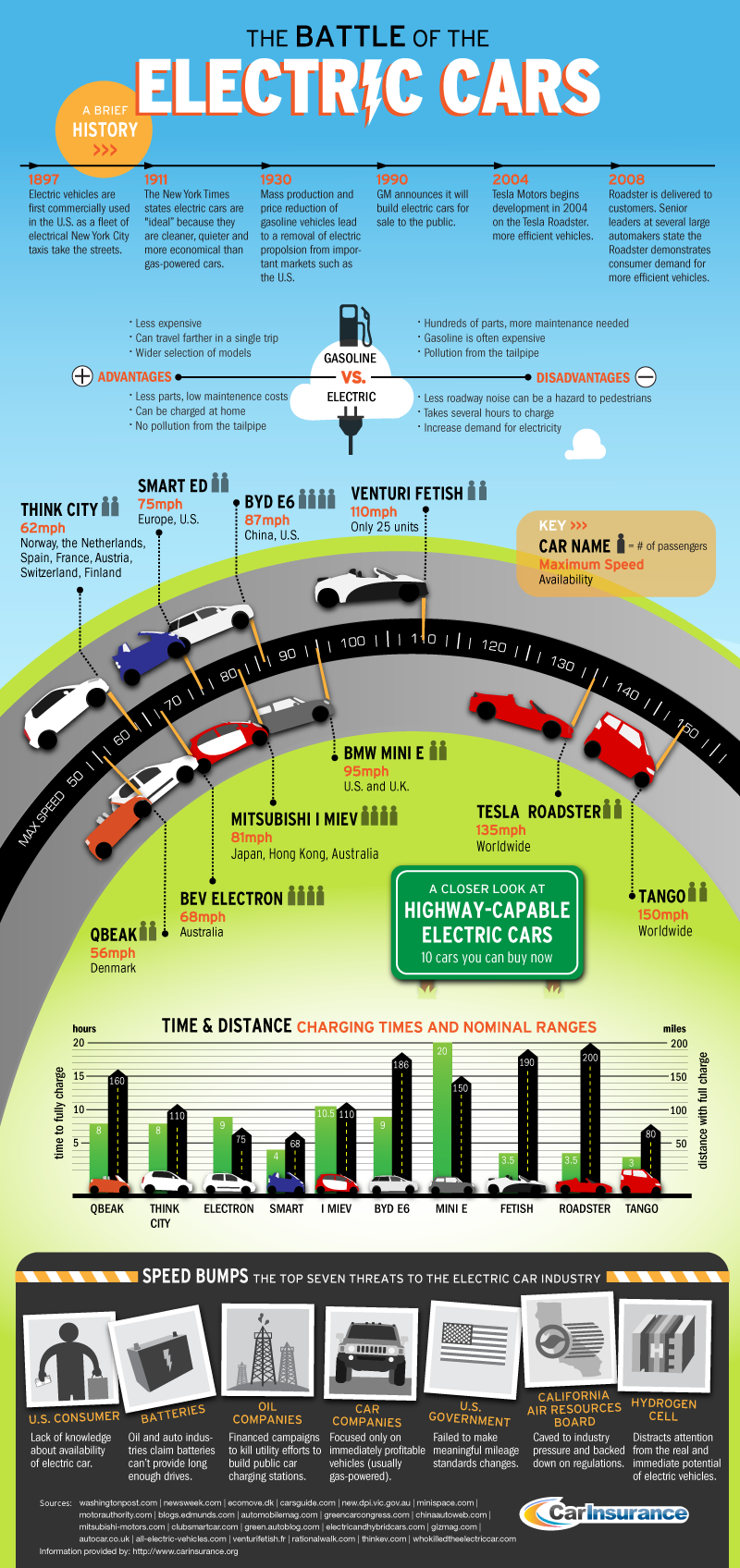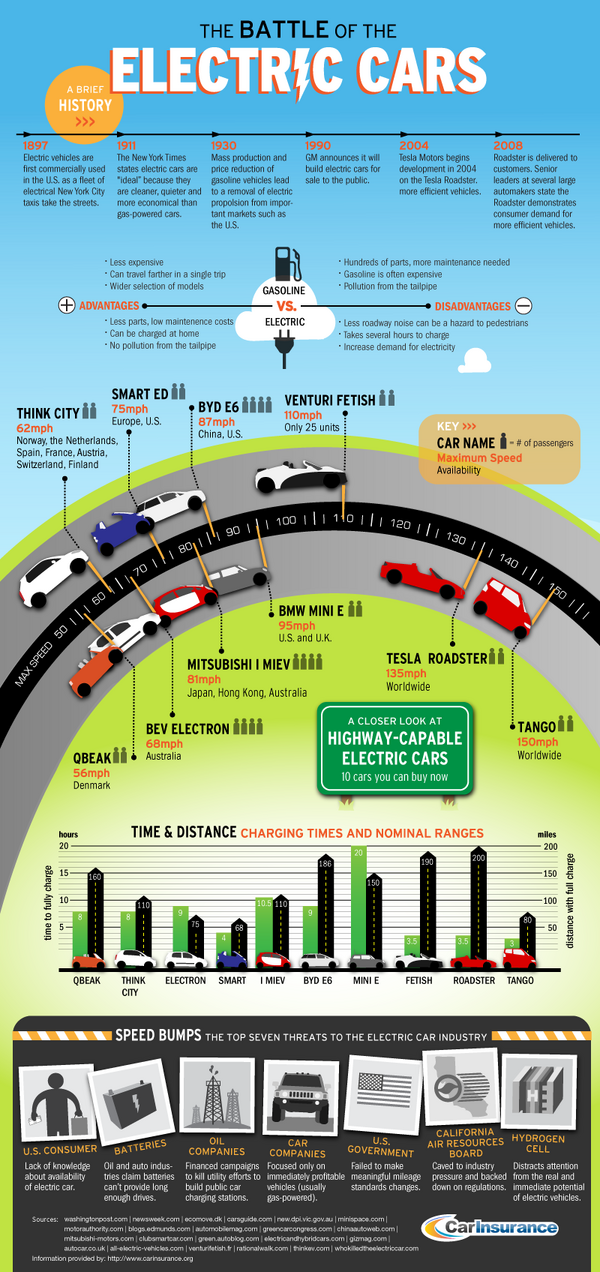Kirstytanner (talk | contribs) |
|||
| Line 15: | Line 15: | ||
*Noise pollution is reduced, especially in major cities. Electric vehicles have no muffler and there is no need for one because there is no engine, or ignition, so it has nothing to muffle. The cars are almost completely silent. | *Noise pollution is reduced, especially in major cities. Electric vehicles have no muffler and there is no need for one because there is no engine, or ignition, so it has nothing to muffle. The cars are almost completely silent. | ||
*Reduces the dependency on foreign oil. Purely electric vehicles takes no gasoline, but uses alternative energy sources to generate electricity.<ref>Anderson, Curtis D., and Judy "Electric and Hybrid Cars: A History" 2nd Ed</ref> | *Reduces the dependency on foreign oil. Purely electric vehicles takes no gasoline, but uses alternative energy sources to generate electricity.<ref>Anderson, Curtis D., and Judy "Electric and Hybrid Cars: A History" 2nd Ed</ref> | ||
*Lower costs: lower operating costs, lower maintenance costs and higher efficiency, plus exemptions from stamp duty and lower registration fees in some countries and states. <ref>Tanner, Kirsten "The Ultimate Electric Cars Buying Guide"</ref> | |||
==History of the electric cars== | ==History of the electric cars== | ||
Revision as of 02:37, 2 June 2015
Defining electric cars
Electric cars are cars powered by an electric motor, one or more controllers, and a large stockpile of batteries[1]. These vehicles plug into a source of electricity like a special recharging station (or -in the case of plug-in cars- in wall sockets) to recharge the battery. The main defining feature of an electric vehicle is that they have no gas engine. Unlike traditional plug-in electric vehicles (PEV’s), which rely only on batteries, hybrids have an additional source of power. Hybrid vehicles are “vehicles with internal combustion (IC) engines, also containing an electric motor and a small bank of batteries that assist the IC engine.[2] They can’t be plugged in for charging the battery, but instead rely on the conventional gasoline engine motor for charging the battery and/or a regenerative braking system. There are three types of electric vehicles that exist: battery-electric vehicles, conventional hybrid-electric vehicles, and plug-in hybrid vehicles.[3]
Advantages of electric cars
Compared to internal combustion engine-powered cars:
- They have less carbon dioxide emissions, which contributes to the depletion of the ozone layer. Even though some electric cars may use power that comes from coal the total amount of carbon dioxide emitted is less that that of gas-powered cars. Also they have no tailpipe which eliminates emissions (again this is as long as the energy source is renewable).
- They take no gasoline but rely on electricity from power grids and other forms of renewable energy such as windmills, solar panels, and so on.[4]
- Aids in reducing urban air pollution.[5]
- The batteries don’t contain as heavy metals as conventional cars.
- Electric vehicles require almost none of the maintenance of conventional cars like oil changes and emissions check. Electric vehicles can provide nearly 1 million mills of service before needing maintenance.[6]
- Noise pollution is reduced, especially in major cities. Electric vehicles have no muffler and there is no need for one because there is no engine, or ignition, so it has nothing to muffle. The cars are almost completely silent.
- Reduces the dependency on foreign oil. Purely electric vehicles takes no gasoline, but uses alternative energy sources to generate electricity.[7]
- Lower costs: lower operating costs, lower maintenance costs and higher efficiency, plus exemptions from stamp duty and lower registration fees in some countries and states. [8]
History of the electric cars
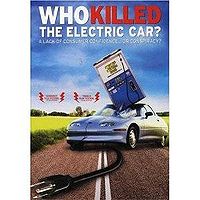
Electric propulsion was not first used in other vehicles than cars. The locomotive was the first fully electrical vehicle and was created by Werner Von Siemens.[9] The first fully electric type of transport in US America was a rail operation in 1888 created by General Electric. By the year 1891 a man named William Morrison put an electric motor in a car. Electric cars were supposed to be the car of the future and got a lot of attention in the 1890’s and early 1900’s.[10] However due to a breakthrough in internal combustion engines, cars that used gasoline ruled the 1900’s. Now in the 21st century, hybrids and electric cars are making a comeback due to the push for green modes of transport and current high prices of petrofuels (gasoline, Diesel, LPG, ...).
Types of electric cars
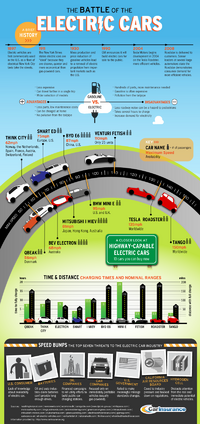
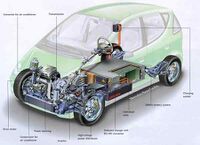
Battery-electric cars
Battery-electric cars are in a class of their own when it comes to saving gas. Due to the fact that it’s uses only a battery to power the electric motor[12], it uses no gas. The distance you can travel with it greatly depends on the load, and speed. Depending on the ambient temperature, the car will need to use more energy warming up the car or keep it cool, which depletes the battery faster. Depending on how much it has to carry, the load will affect how hard the battery has to work. Lastly, if you like to go fast, don’t expect to go far. Like most cars BEV’s can travel further and longer at a controlled comfortable speed. For BEV’s that speed could range depending on what type of car you have. An example of a Battery-electric car is the Nissan Leaf. Currently, advice from manufacturers is that extension leads cannot be used for charging at a normal household or any other outlet. This is not strictly true. Normal extension leads use twisted copper for flexibility. However household wiring cable can be used for charging. A 30 Metre cable for an 12 Amp 240V load is possible, however, household wiring cable is not designed to be handled regularly, as it is stiff, so use large loops of it and handle it carefully to avoid any kinks in the cable. A very useful amount of charge can be gained in just a few hours. Use the BEV user manual to estimate how much extra range you will get; it will be surprisingly good. BEV's are also known as Plug-in cars or simply Electric cars. They are simple in construction and like a DVD drive or laptop battery, need little maintenance; brakes are not used as much as in a gas car because there is considerable braking effect when the vehicle re-generates while slowing down. Servicing costs are much lower than gas cars (which typically have 30,000 moving parts), especially as the vehicle ages. Various battery leasing schemes are available that typically guarantee a 90% performance up to a decade. Range can also be improved by gentle (not slow) cornering and using windows instead of air conditioning or taking a warm coat instead of constantly using the heater. For driving medium distances like 100 miles, purchase the 1 hour charge version of vehicles. Vehicles are the simplest of all cars to drive and every passenger says how silent and trouble-free the experience is. Many drivers say BEV's have put the fun back into motoring. Approximate costs. Purchase costs are higher than a gas car but this is offset by very low running costs. A typical UK micro hatchback Electric car in the UK (if the decision is to throw the car away after 10 years) is likely to save £6500 over a similar gas car (on a 10,000 mile per year basis). After the decade, the range will gradually reduce, but the servicing savings will be even more beneficial. Various local schemes exist for free parking in cities, and nearly 30,000 lock-able electric points are listed on [1]. Power is often supplied free in the UK for a fixed one-off payment (£10-£20 currently). Green issues. To have guilt-free motoring it is possible to buy power generated from wind, hydro, solar or wave. This is marginally more expensive but those costs have already been factored in above.
Conventional hybrid-electric cars
Hybrid-electric cars[13] use both gas and electricity to propell the car. Cars running on a IC engine typically use a lot of gas at times when they come to a stop or pick up speed after a stop[14]. The electric motor is used to eliminate the siphoning of gas at these particular moments. In a (series-)parallell hybrid-electric car, the electric motor is used when a car is idle until a speed of 30- 40 mph. Passed 40 miles, the other half of the hybrid system known as the internal combustion engine takes over. The hybrid gets its name from being able to use both the electrical motor and the combustion engine. It may also charge the battery by using the kinetic energy from braking and redirecting that energy back to the engine. An example of a hybrid would be the Toyota Prius[15].
Plug-in hybrid-electric cars
Plug-in hybrid-electric cars are a subdivision of the hybrid-electric car. PE-cars (Plug-in hybrid cars) generally have a larger battery. The larger battery holds a longer charge making it possible to not use the internal combustion engine for a greater period of time.[16] As long as the car isn’t used passed the point of its all-electric range, the Plug-in hybrid is able to not use any petrofuel at all. One criticism of this class of vehicle concerns the charging time of the battery. Due to the fact that it has a moderatly high capacity battery, fully charging the battery takes quite a while. The hybrid-electric car is designed to be charged at night when people are asleep. An example of Plug-in hybrid electric car is the Chevy Fusion.
Sustainability
Electric cars are just one way to “go green.” There a many benefits to electric cars including lower maintenance and maintenance cost, not having to go to the pump and most importantly its overall impact on the environment. Electric cars (and vehicles) are classified as zero-emissions vehicles (ZEVs) meaning they produce zero emissions from the actually vehicle. The minor emissions that are released happening during the generation of electricity, but even these emissions can be eliminated depending on how the electricity is generated—if its generated from a renewable energy source such as wind, solar, or hydrogen. According to the [17] “electric vehicles create only 1 percent of the pollution generated from the cleanest gasoline vehicles.”
References
External links
- ↑ [http://www.hybridcars.com/electric-car Elkectric car definition
- ↑ according to “Plug-in Hybrids, The Cars That Will Recharge America” by Sherry Boschert
- ↑ Wikipedia: Hybrid electric vehicle #Comparison of regular hybrids with petroleum and plug-in hybrid vehicles
- ↑ U.S. Department of Energy Argonne's Transportation technology Research Development Center
- ↑ Sperling, Daniel "Future Drive: Electric vehicles and Sustainable Transportation"
- ↑ “Plug-in Hybrids, The Cars That Will Recharge America” by Sherry Boschert
- ↑ Anderson, Curtis D., and Judy "Electric and Hybrid Cars: A History" 2nd Ed
- ↑ Tanner, Kirsten "The Ultimate Electric Cars Buying Guide"
- ↑ http://www.american-rails.com/electric-locomotives.html
- ↑ http://en.wikipedia.org/wiki/History_of_the_electric_vehicle
- ↑ with permission of www.sustainable-sphere.com
- ↑ http://www.afdc.energy.gov/afdc/vehicles/electric_basics_ev.html
- ↑ http://www.transportation.anl.gov/phev/index.html
- ↑ They even consume more fuel than required when they simply run at any speed below/over their optimum cruise speed
- ↑ Toyota Prius is a specific type of parallell hybrid car, called the series-parallell hybrid car, see the drivetrain design here
- ↑ http://www.transportation.anl.gov/phev/index.html
- ↑ American Lung Association
